In the coming years, pharma will mobilize around engaging and accommodating a multitude of stakeholders to generate a competitive advantage. Long gone are the days of targeting healthcare providers as the entire commercial strategy. Simplicity in commercialization no longer exists and has been replaced with a complex multistakeholder model involving physicians, of course, but also payers, patients, provider systems, partners, and many others in the evolving ecosystem. Even interactions with traditional stakeholders have changed, and new participants to the 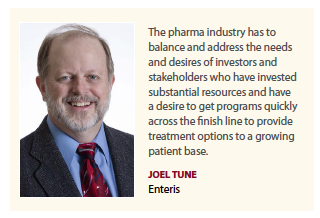 arena are forcing an evolution in business strategy. This transformed pharmaceutical environment has a myriad of challenges, and the road to effectively engaging with the many stakeholders will be long.
arena are forcing an evolution in business strategy. This transformed pharmaceutical environment has a myriad of challenges, and the road to effectively engaging with the many stakeholders will be long.
Giving Partnerships True Meaning
A good place to start is knowing how to partner with both new and old players across the landscape. Pharma companies are shedding the prevalent historical belief that winning by “going at it alone" is the way to go, and most pharmaceutical commercial organizations are now actively embracing the concept around partnerships.
According to Jamie Antis, managing director, Accenture Life Sciences, some partnerships are aimed at creating disruptive top-line growth, such as enabling unique outcome-oriented business models anchored around patient services; some are focused on driving smarter business decisions and enabling more effective organizations by overlaying digital technology such as artificial intelligence and machine learning into commercial operations, and others are focused on purely driving efficiencies in the business. Despite the wide array of partnership models, the successful ones will be able to be tested, evaluated, and scaled quickly for measurable impact.
“A successful partnership needs to demonstrate value across three dimensions: value for 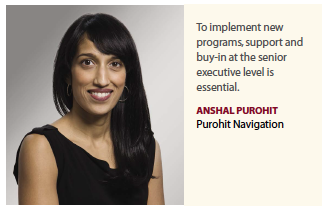 the pharma business itself, value for patients or customers, and value for the broader healthcare ecosystem," Ms. Antis says. “If value across these three dimensions isn’t balanced, the success of that partnership will fail."
the pharma business itself, value for patients or customers, and value for the broader healthcare ecosystem," Ms. Antis says. “If value across these three dimensions isn’t balanced, the success of that partnership will fail."
As the new ecosystem continues to evolve, manufacturers should weigh the pros and cons of different types of partnerships, including risk-share contracts, co-development agreements, and service-share agreements. According to Hudson Plumb, senior VP, strategy, EHR and outcomes optimization, Heartbeat, risk-share contracts offer the promise of shared “skin in the game" and active collaboration to drive results, but can be challenging to negotiate and to measure. Co-development agreements offer opportunities to use cross-discipline skillsets to develop solutions for mutual benefit, but can be complicated to manage given the possibility of “too many masters" and competing direction. Service-share agreements, featuring health system adoption of novel patient services developed by pharma, offer immediate opportunities to expand partnerships in a mutually beneficial way. Pharmaceutical companies can develop innovative services that provide direct support to health systems by identifying appropriate patients dynamically at the point of care or across the entire practice, identifying patients with low activation, and solutions to improve it, or connecting to patients outside the traditional point of care experience to improve adherence, increase activation, monitor and track patient reported outcomes, and deliver real-world data back to the health system.
“Solutions may combine novel digital technologies, including EHR-empowered tools, as well as AI-powered patient services, to provide a robust solution that will appeal to health system clinical and business leaders," Mr. Plumb says. “Manufacturers that take a leadership role in forming new partnerships stand to benefit by forging deeper relationships that translate into preference."
Engagement Across the Silos
The need for engagement across a spectrum of stakeholders is not new, and companies have long had specialized functions designed to meet the needs of specific audiences.
What is new, however, is that the lines between stakeholders are increasingly being blurred. Messages delivered to one audience — such as investors or physicians — are often making their way to other groups, such as patients or policymakers, says Jennifer Gottlieb, president, W2O.
“This creates an important new responsibility for pharmaceutical marketers and communicators: pushing the same narrative to the disparate groups that pharma touches," she says.
The idea of one-voice communications, in which variations on the same idea are presented to all stakeholders, has long been a theoretical goal but rarely a priority in practice. This dismissive attitude toward integration is no longer viable, no matter how ingrained silos are in pharma organizations, Ms. Gottlieb says.
“Bringing together these groups requires deep knowledge of the stakeholders and how pharma serves them — a role that marketing and communications is uniquely equipped to accept," she says.
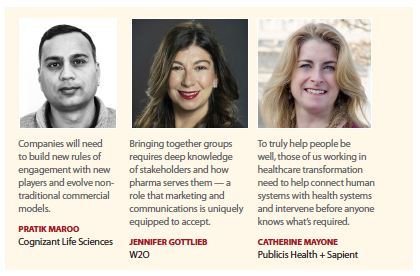 The pharmaceutical industry is making fundamental shifts: first, in defining stakeholders, moving beyond the sole focus on the HCP and exploring not only other stakeholders but also the overlapping needs of each group. Companies are redefining customer-facing roles and adding different positions designed to interface with emerging stakeholders, says Rita Ribeiro, senior director, marketing and communications, Publicis Health Solutions.
The pharmaceutical industry is making fundamental shifts: first, in defining stakeholders, moving beyond the sole focus on the HCP and exploring not only other stakeholders but also the overlapping needs of each group. Companies are redefining customer-facing roles and adding different positions designed to interface with emerging stakeholders, says Rita Ribeiro, senior director, marketing and communications, Publicis Health Solutions.
“The next step is to embrace the power of technology," Ms. Ribeiro says. “This involves creating new levels of interfacing and enhancing the user experience at each step of the continuum through integrated platforms. Leading examples include leveraging big data and employing digital intelligence in the IoT and transforming the results into stakeholder shared value."
Marketing communications also are being tailored to target the C-suite within accounts, an audience that is focused less on brand sales and more on process implementation and strategy.
“To implement new programs, support and buy-in at the senior executive level is essential," says Anshal Purohit, president, Purohit Navigation. “This innovative approach calls for cross-functional collaboration and close partnership with customers to support protocol implementation and institutional change. It’s the creation of a solid business model between the account and the pharma company. And ultimately, the patient is the one who benefits."
Managing multistakeholder interactions has many challenges, and Pratik Maroo, chief digital officer, Cognizant Life Sciences, notes two areas that are particularly troubling for the pharma industry. First, there is heightened expectation on the user experience.
“Patients expect simple and adequate disease state education," he says. “Investigators 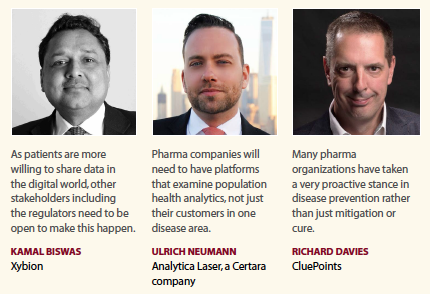 expect cutting-edge and trustworthy scientific information. PBMs and payers expect quantified and proven value/benefits. Providers expect unified and empowered account management. To meet these expectations, pharma has to invest in delivering the right content at the right time through the right channel on a continuous basis. Second, relationships within the stakeholder ecosystem are changing at a rapid pace and new nontraditional players are emerging."
expect cutting-edge and trustworthy scientific information. PBMs and payers expect quantified and proven value/benefits. Providers expect unified and empowered account management. To meet these expectations, pharma has to invest in delivering the right content at the right time through the right channel on a continuous basis. Second, relationships within the stakeholder ecosystem are changing at a rapid pace and new nontraditional players are emerging."
Some of the well-known examples are CVS-Aetna and Amazon-Berkshire-JPMC.
“These players have unique needs and will have a different power equation with pharma than traditional players," Mr. Maroo adds. “Companies will need to build new rules of engagements with these players and evolve nontraditional commercial models."
Patient Care Collaboration
Pharma industry experts are well aware of the rapid shift in the healthcare ecosystem where the role of their companies is changing from drug provider to active collaborator for patient care.
“We see the industry actively using digital as a tool to change the core DNA of company operations and to build new business/operational models," Mr. Maroo says. “Successful life-sciences companies will seamlessly blend physical and digital components, delivering new value to patient, care provider, payer, or pharmaceuticals stakeholders."
Kamal Biswas, president and chief operating officer, Xybion, notes that pharma companies are working on collaborative models with providers to access better data and expertise to help with trials.
“With more and better data, pharma researchers can realize product effectiveness more quickly, understand product signals, and access the best talent for clinical trials," he says. “As patients are more willing to share data in the digital world, other stakeholders, including the regulators, who need to be open to make this happen."
Educated patient demands, the retail world of medicine, more data sharing, consolidation of manufacturer-provider-payer segments, evidence-based pharma, and modernized regulations are some of the areas leading toward the new centralized digital health ecosystem, Mr. Biswas adds.
As stakeholder boundaries become thinner and thinner, “connected health" is taking shape around the patients. Providers are focusing on outcomes. Employers are encouraging wellness. Medical-technology and pharma companies are making prescription compliance easier. Medical device companies are monitoring, dissecting, and taking health actions of their own. Payers are pushing for true health value-driven pricing models.
“These are all positive moves toward achieving patient value," Mr. Biswas says.
Connecting the Dots
Experts predict a long road ahead and many challenges to overcome before pharma as a whole evolves into being an active part of collaborative patient solutions.
“We all know that change and evolution happen gradually in the undeniably conservative pharma industry, but there are pockets of progress," says Richard Davies, VP, solution expert, CluePoints.
These pockets are being facilitated by technology enablers that are being used by patients.
“It’s already much easier to collect pre- or post-marketing clinical data using apps, sensors, wearables, and the ever-burgeoning Internet of Things or IoT," Mr. Davies says.
“It’s also possible to influence behavior and lifestyle choices of patients through technology that helps prevent the onset or exacerbation of health issues in either potential or existing populations."
According to Mr. Davies, many pharma organizations are taking a proactive stance in disease prevention rather than just mitigation or cure. A recurring theme from clinical trial patients, however is the lack of 360-degree visibility into the development of the drug in which they participate. They feel their journey with the industry is a short one, limited to the time they participate in clinical trials.
“Today it’s easy to generate data on an unprecedented scale that could be valuable in bringing a new drug to market or allow better targeting/use for an existing one," Mr. Davies continues. “However, we’re reminded on a regular basis that breaches in data security occur more regularly than they should and concerns about data usage and privacy are present for us all. There is a lot of work still to do in this area."
This ecosystem will not evolve sequentially but rather in several variations of which three are in play at this point, says Ulrich Neumann, senior director, U.S. market access and commercial strategy, Analytica Laser, a Certara company.
First, there is the volume-based, fee-for-service ecosystem that is still active, which 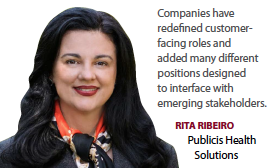 essentially involves selling pharma products to consumers. The goal is to get more prescriptions filled.
essentially involves selling pharma products to consumers. The goal is to get more prescriptions filled.
The second ecosystem features value-based payments, where the focus is on quality impact. Pharma is one contributor to this ecosystem in which the partners have begun to share risk. This model requires additional coordination and realignment of incentives among partners.
The third variation, which is just beginning, revolves around ownership of patient health. This takes into account all the behavioral, social, and physical aspects of health and all the pertinent data points.
“This will be the most transformative ecosystem," Mr. Neumann says. “This decentralizes personal health management and puts it in the hands of consumers, who will curate their health and health systems, against the available data. As a result, companies will need to have platforms that examine population health analytics, not just their customers in one disease area."
New disruptors have won in different industry marketplaces by helping customers become more connected with the ecosystems that serve them.
For healthcare, this means the concept is more macro than just the pursuit of patient outcomes — it’s the notion that the economy will reward companies that add value to all customers throughout the value chains.
“To achieve both health outcomes and business outcomes, it’s not enough for companies to be simply patient-centric because patients don’t want to be patients and patients have to navigate a complex and siloed systems of care," says Catherine Mayone, managing partner, Publicis Health+ Sapient. “To truly help people be well, those of us working in healthcare transformation need to help connect human systems with health systems — and intervene before anyone even knows what’s required."
There is a long road ahead, Ms. Mayone continues, but there is a new willingness on the part of health systems to engage with pharma, provided it’s done in a way that focuses on health outcomes, which in turn drives health systems’ quality metrics and business outcomes. It also helps when the initiative is something that can be objectively measured and published.
“Finally, having a third party as an intermediary between pharmaceutical companies and the health system helps bring a level of neutrality that health systems value and trust," she says.
Joel Tune, CEO of Enteris Biopharma, also notes that the pharma industry has to balance and address the needs and desires of investors and stakeholders who have invested substantial resources and have a desire to get programs quickly across the finish 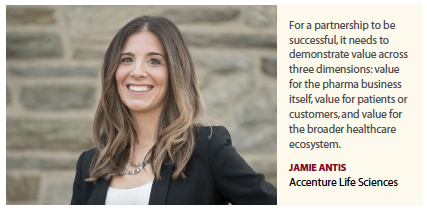 line to provide treatment options to a growing patient base. The industry is well along its way on this journey due to the engaged interests of involved patient advocacy groups focused on fulfilling unmet medical needs.
line to provide treatment options to a growing patient base. The industry is well along its way on this journey due to the engaged interests of involved patient advocacy groups focused on fulfilling unmet medical needs.
“The focus will continue to be about the long game and provide patients with optimal treatment solutions," Mr. Tune says.
There will be a greater need for patient education mechanisms, such as nurse navigators, and for organized patient communities, such as PatientsLikeMe, Mr. Neumann adds, as pharma companies now understands the value of patient communities and is seeking to create and empower them.
The full impact of patients and technology hasn’t been achieved yet, and one can only wonder what will the pharmaeceutical industry do with these management programs now that the focus is not all about prescribers anymore but about empowering individual patients.
“The main currency of success in this ecosystem is trust," Mr. Neumann says. “The goal is to be trusted as a partner by those you ultimately serve, who are patients."(PV)
~~~~~~~~~~~~~~~~~~~~~~~~~
Best Practices in Multistakeholder Environments
 Mark Jara
Mark Jara
Principal, RxS LLC
PharmaVOICE 100 — 2018
The bottom-line goal for the life-sciences industry is to improve patient lives. A clearer path to achieving this goal can be realized when companies place themselves on the cutting edge of technology with innovative approaches toward healthcare. We must not be afraid to embrace change, and really should be seeking alternative approaches that move us away from the status quo. This means: staying up to date on industry trends, educating employees, implementing platforms that support the use of the most current technology, and becoming active participants in social media. These items and more provide better access for patients to have the best care possible at their fingertips.
Perhaps the most significant benefit of this model is that it provides patients with tools that empower them to feel like they are part of the solution and not just blindly following their physician’s advice. This empowerment, in turn, elevates the role of companies within the industry to be much more in tune with quality patient care.
The issue is that we, as an industry, are not fully there yet, and the evolution of this eco system depends on several aspects including: a willingness to embrace and implement new technologies and be quick and nimble in terms of implementing new technologies, updating processes, and training staff appropriately; attaining buy-in from top decision makers to implement change, including having a commitment to horizontal collaboration at all touchpoints within the healthcare continuum; educating employees throughout the life-sciences industry; increasing acountability and a sense of ownership at all levels of the model among the stakeholders; and challenging the status quo with the goal of making changes and enhancements as necessary.
 Kathy Johnson
Kathy Johnson
VP, Life Sciences,
LexisNexis
As the healthcare ecosystem evolves, pharma companies will need to develop strategies and tactics to ensure three key things: patients are supported with the right medicine when they need it; HCPs are supported with the necessary information to prescribe medications; and payers have the evidence they need to pay pharmacy claims. To meet these objectives, the pharma community will need to better assess patient health risks and outcomes for their products.
With that said, even if the above-named objectives are met, medication adherence, however, remains an obstacle to saving lives, controlling costs, and improving the quality of healthcare.
Statistics show that nearly three out of five American adults take at least one daily medication. And, from 2000 to 2012, the proportion of people taking five or more prescription medications doubled. A recent report estimated that 25% to 50% of patients are noncompliant with their prescribed drug therapy. Additionally, poor medication adherence following hospitalization costs the U.S. healthcare system roughly $100 billion annually, according to a New England Journal of Medicine study.
Predicting future health risks and the likelihood of patient adherence has not been easy.
Medical and pharmacy claims data have traditionally been the main source of information used to evaluate health risk.
However, many of the organizations we work with are telling us that they are finding that claims data alone does not give a complete view of a patient. Consensus is that claims data have value. But, in many cases, when we talk about preventive care, claims data often are reactionary to a health event that has already begun.
Recent studies show that medical determinants are only accountable for 20% of healthcare outcomes, whereas social determinants of health (SDOH) account for as much as 50%. Social determinants are rapidly gaining acceptance as a reliable indicator for predicting and improving health outcomes. They are being integrated into the analytics that feed a patient’s care plan, patient outreach and engagement, and education programs.
 Joy Taylor
Joy Taylor
Principal,
Grant Thornton
In recent years, the pharmaceutical landscape has changed as payers demand lower prices and greater value, empowered patients demand better care, and advances in medicines resulting from aging populations with more complex health needs. Healthcare today requires a multistakeholder approach to address patients’ needs in a sustainable way and adapt to pharma’s complex ecosystem. Collaboration and partnership between the various stakeholder groups will be key in obtaining a vision for a healthcare system that delivers effective and efficient care to patients.
The benefits of adopting methods of collaborations and partnerships are extensive in both tangible and intangible ways. Benefits include acceleration of scientific progress, new innovative and cost-effective solutions, and increased trust and transparency with patients and other stakeholders. Some companies have already implemented this understanding at the research level, working with external partners to drive better patient outcomes through real-world comparative data. However, this approach must be expanded to other stakeholder groups, such as payers, providers, or technology companies.
While an integrated multistakeholder approach is the way forward, it will take time for the new ecosystem to evolve. Pharmaceutical companies that succeed in developing new collaborative models that are patient centric and deliver innovative healthcare solutions, will have a clear competitive advantage over industry peers.



















